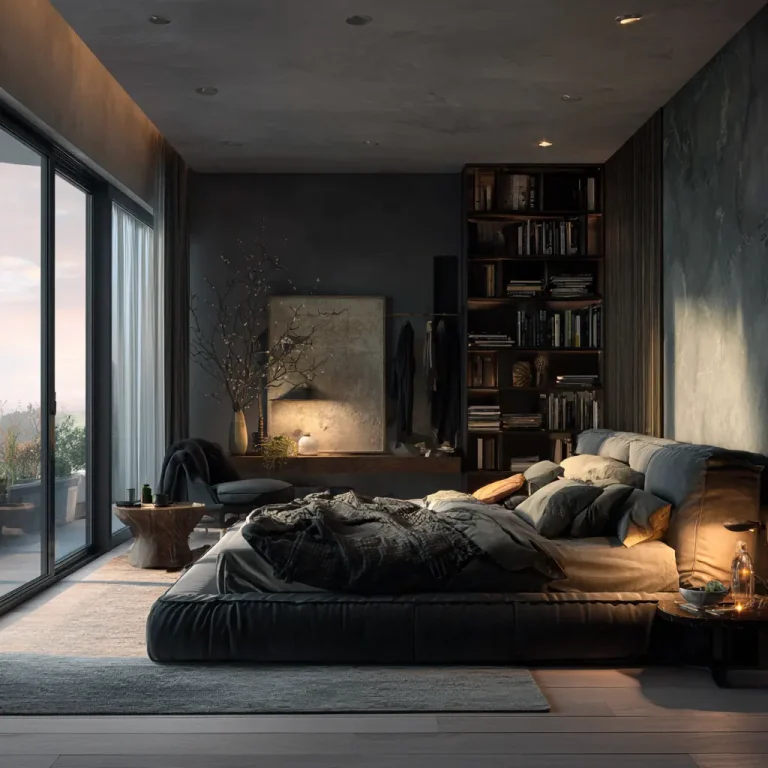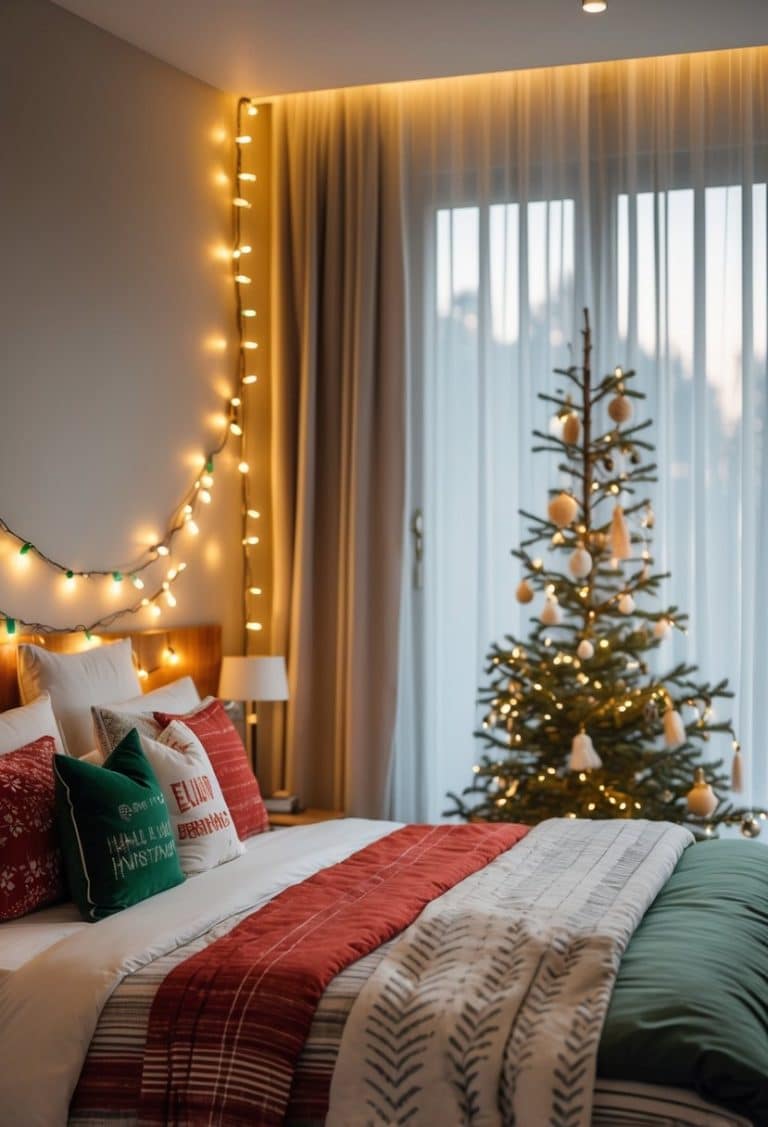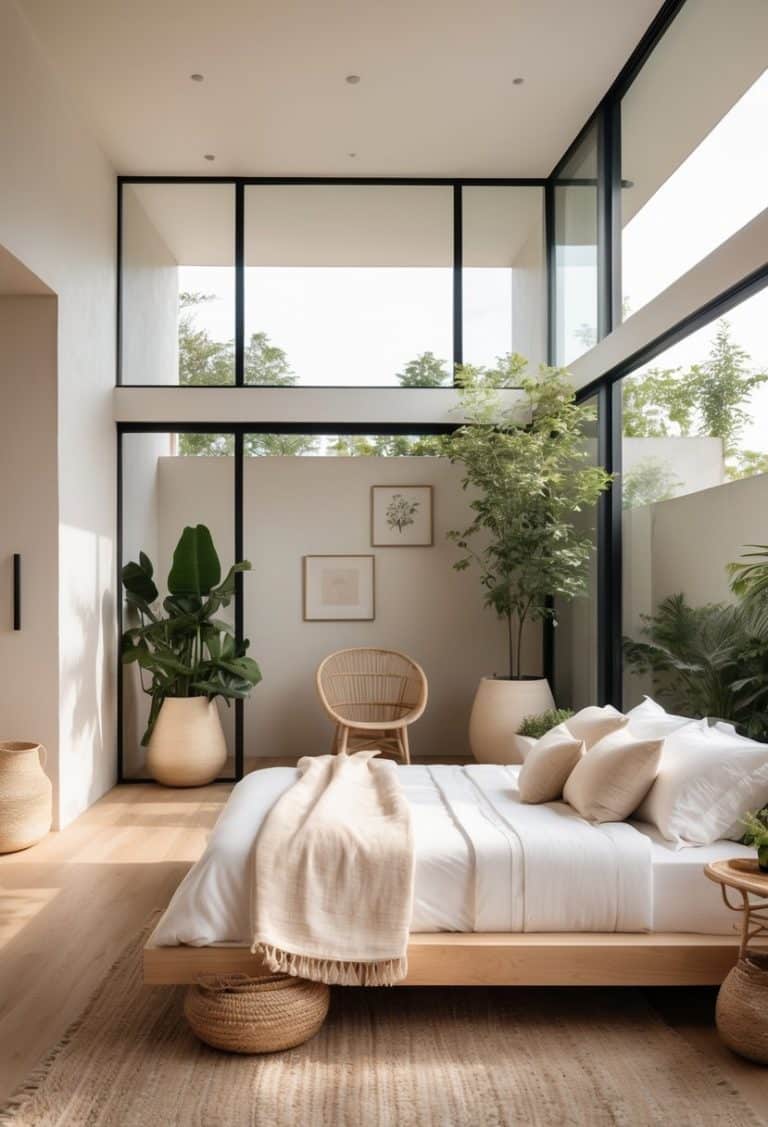Bedroom Makeover Ideas 2026: 22 Stylish Ways To Refresh Your Space

A bedroom makeover in 2026 focuses on creating a space that feels both comfortable and functional while reflecting personal style. Design trends highlight simple updates that can change the mood of a room without requiring a full renovation. This article shows how small design choices can make a bedroom more modern, practical, and inviting.

From color palettes and lighting to furniture and layout, the upcoming ideas emphasize balance between style and comfort. Each section explores straightforward ways to refresh a bedroom, offering options that work for both small updates and larger changes.
Add a statement wall with bold wallpaper

A statement wall can change the look of a bedroom without a full remodel. Bold wallpaper adds texture, color, and pattern that paint alone cannot provide.
In 2026, popular choices include geometric prints, nature-inspired designs, and large-scale patterns. These styles help create a clear focal point in the room.
Incorporate layered lighting with sconces and floor lamps

Layered lighting helps balance brightness and comfort in a bedroom. Sconces provide focused light without taking up surface space.
Floor lamps add soft ambient light and can fill darker corners. Together, they create a flexible setup that supports both relaxation and practical tasks.
Use a neutral color palette with pops of jewel tones

A neutral base creates a calm and flexible backdrop. Shades like beige, gray, or soft white keep the room grounded.
Adding jewel tones through pillows, throws, or artwork brings depth and interest. Deep emerald, sapphire, or ruby accents stand out without overwhelming the space.
This balance allows the room to feel both restful and visually engaging.
Install floating shelves for display and storage

Floating shelves give bedrooms extra storage without taking up floor space. They work well for books, plants, or small decor.
Homeowners can place them above a desk, beside the bed, or around a TV. Their clean design helps the room look organized and simple.
Swap out old bedding for textured linens

They can replace worn sheets with textured fabrics like linen or cotton blends for a simple update.
Textured bedding adds depth and creates a more inviting look without major changes.
Neutral tones or soft patterns help the room feel calm while still adding visual interest.
Add a large area rug to define the space

A large area rug helps anchor the bed and creates a clear focal point in the room.
It also separates the sleeping area from other zones, which is useful in larger bedrooms.
By choosing the right size and placement, the rug adds structure and balance to the layout.
Incorporate a mix of vintage and modern furniture

They can pair antique dressers or armoires with sleek, modern nightstands to create balance.
This mix adds character without making the room feel outdated.
Using both styles allows flexibility, as vintage pieces bring warmth while modern designs keep the space functional and simple.
Use blackout curtains for better sleep quality

Blackout curtains reduce outside light, which helps create a darker space for rest.
They also provide extra privacy and can lessen noise from outdoors.
With many fabric styles and colors available, they fit both practical needs and bedroom design.
Add greenery with low-maintenance indoor plants

They can place small potted plants on nightstands or shelves to bring natural color into the room.
Hanging vines or trailing plants work well in corners where floor space is limited.
Low-maintenance options like succulents, snake plants, or pothos grow easily with minimal care.
Create a cozy reading nook with a comfortable chair

A bedroom corner can become a quiet spot with a simple chair and small side table.
Adding a soft pillow or blanket makes the space more inviting.
Good lighting, such as a floor lamp or wall sconce, helps create a practical place to read.
Use mirrored furniture to enhance light and space

Mirrored furniture reflects natural and artificial light, making a bedroom appear brighter.
Pieces like mirrored nightstands or dressers can also create the feeling of more space in smaller rooms.
These items add a practical surface while blending function with a clean, modern look.
Rearrange furniture for better flow and openness

Placing the bed against the longest wall helps open walking paths and reduces cluttered corners.
They can angle seating toward a window or focal point to make the room feel organized.
Using fewer, multi-functional pieces keeps the layout simple and makes the space easier to move through.
Incorporate metallic accents in decor and fixtures

They can use metallic accents to add subtle detail or create a focal point in the bedroom. Light fixtures such as brass lamps or gold chandeliers bring warmth and style.
Small touches like drawer pulls, picture frames, or mirrors with metallic finishes help balance the look without overwhelming the space.
Add a bench or ottoman at the foot of the bed

A bench or ottoman at the foot of the bed adds both style and function. It creates a place to sit while putting on shoes or setting down a bag.
Many designs include hidden storage, making it easy to keep blankets, pillows, or extra bedding organized.
Different fabrics and finishes allow the piece to match the room’s decor while keeping the layout practical.
Use art prints or framed photos for personalized walls

They can arrange framed photos or art prints to reflect their style and interests.
Mixing different frame sizes or colors creates variety, while uniform frames give a clean look.
Personal photos, travel shots, or favorite artwork make the bedroom feel more personal and inviting.
Install a statement headboard in fabric or wood

A fabric headboard adds softness and comfort while giving the bed a polished look. Upholstered designs work well in both modern and traditional spaces.
Wood headboards bring warmth and structure. Options like reclaimed wood or clean-lined panels create a focal point that suits many bedroom styles.
Add decorative throw pillows with varied textures

They can layer pillows with cotton, linen, velvet, or knit covers to create visual interest.
Mixing smooth and textured fabrics adds depth without overwhelming the space.
Using a few neutral tones with one or two patterned designs keeps the arrangement balanced and cohesive.
Use a color-blocked paint technique on one wall

Color-blocking lets a bedroom wall stand out with clean lines and distinct sections of color.
They can choose two or more shades that contrast or complement each other. This approach defines space and adds structure without using extra furniture.
Simple geometric shapes or horizontal divisions work well and keep the design modern.
Replace outdated hardware on dressers and nightstands

Swapping old knobs or pulls for new ones gives furniture a cleaner, updated look.
They can choose simple metal handles, modern matte finishes, or classic wood pulls to match the room’s style.
This small change makes dressers and nightstands feel refreshed without the need for major projects.
Incorporate natural materials like rattan or wood

Rattan and wood add texture and warmth to a bedroom. These materials create a calm and grounded atmosphere.
A rattan chair, wooden bed frame, or woven lamp shade can bring natural character to the space.
They pair well with neutral colors and simple designs for a balanced look.
Create a gallery wall with cohesive frames

A gallery wall can bring structure and personality to a bedroom. Using frames with a consistent style or color keeps the display balanced and easy on the eyes.
They can mix photos, prints, or artwork while letting the uniform frames tie everything together. This creates a clean, organized look.
Use scented candles or diffusers for ambiance

Scented candles and diffusers can make a bedroom feel calm and inviting. They add a soft fragrance that helps set the mood.
Lavender, vanilla, or sandalwood work well for relaxation. Citrus or cedar can bring a fresher feel.
Placement matters—keeping them on nightstands or shelves spreads the scent evenly without overpowering the room.
Key Principles of a Modern Bedroom Makeover

A modern bedroom makeover often focuses on two main areas: the role of color in shaping mood and the balance between comfort and practical use of space. Both elements work together to create a room that looks current while remaining livable every day.
Color Psychology and Palette Selection
Color choices influence how a bedroom feels and functions. Neutral bases such as soft grays, warm beiges, and off-whites remain popular because they provide a calm backdrop. These shades also allow accent colors to stand out without overwhelming the space.
Accent tones, like deep blues, muted greens, or terracotta, add personality and can shift the mood of the room. For example:
- Blue tones encourage relaxation and better sleep.
- Green shades bring a natural, refreshing atmosphere.
- Earthy colors, such as clay or rust, create warmth and depth.
Layering colors through bedding, rugs, and wall art helps avoid a flat look. A simple approach is to keep walls neutral and introduce bolder shades in smaller elements. This method makes it easier to update the room later without major changes.
Lighting also affects how colors appear. Natural daylight enhances cooler tones, while warm artificial light softens bold colors. Considering both helps ensure the palette looks consistent at all times of day.
Balancing Comfort and Functionality
A modern bedroom must feel inviting while also serving daily needs. Comfort starts with quality bedding, supportive mattresses, and layered textiles that add softness. Small details, like blackout curtains or noise-reducing rugs, improve rest and relaxation.
Functionality comes from smart furniture placement and storage solutions. Built-in wardrobes, under-bed drawers, or floating shelves reduce clutter without taking up extra floor space. A clear layout makes the room easier to use and maintain.
Many bedrooms now include multi-use zones such as a reading corner or compact work desk. The key is to define these areas without crowding the space. Using rugs, lighting, or furniture arrangement helps separate functions while keeping the room cohesive.
Technology also plays a role. Adjustable lighting, smart blinds, and charging stations add convenience without disrupting the calm feel of the room. When chosen carefully, these updates support both comfort and usability.
Sustainable and Smart Bedroom Design

Design choices in 2026 focus on reducing waste, using healthier materials, and creating spaces that adapt to modern lifestyles. Bedrooms now combine eco-conscious elements with smart features that improve comfort, efficiency, and daily routines.
Eco-Friendly Materials and Furnishings
Sustainable bedrooms rely on natural and responsibly sourced materials. Furniture made from reclaimed wood, bamboo, or FSC-certified timber reduces environmental impact while offering durability. Many choose organic cotton, hemp, or linen for bedding and curtains to avoid synthetic fibers and chemical treatments.
Non-toxic paints and finishes improve indoor air quality. Low-VOC or water-based options help reduce harmful emissions. Rugs made from wool, jute, or recycled fibers add texture without relying on plastics.
Designers also favor modular furniture that can be repaired or reused instead of replaced. For example, bed frames with adjustable parts extend their lifespan. Storage pieces built from recycled metals or composite boards give practical function while limiting waste.
A focus on minimalist layouts supports sustainable living by reducing excess items. Instead of filling the room with decor, key pieces are chosen for both style and utility. This approach saves resources and creates a calmer environment.
Integrating Smart Home Technology
Smart technology in bedrooms centers on energy savings and convenience. Smart lighting systems adjust brightness and color temperature to match natural rhythms, reducing strain and lowering electricity use. Motion sensors can switch lights off when the room is empty.
Climate control plays a major role. Smart thermostats and connected ceiling fans help maintain comfort without constant manual adjustments. Some systems even learn user habits and adjust automatically to save energy.
Furniture and storage also integrate smart features. Beds with built-in USB ports, wireless charging pads, or underframe lighting add function without clutter. Smart blinds or curtains can open with sunrise and close at night, improving sleep quality and reducing the need for artificial light.
Voice assistants tie these features together. With a single command, users can adjust lighting, temperature, and entertainment. This integration creates a streamlined space that feels both efficient and adaptable.






